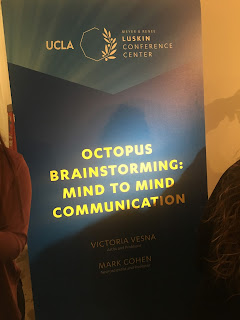Week 4: Medicine, Technology, and Art
I don’t have any first-hand knowledge about medical technology. I have never even stepped foot into a hospital unless on my own accord. The only time I’ve been at the hospital is when I would be swinging by to maybe talk to my mom for a minute as she is an ER nurse.
From what I do know, medicine is what comforts or cures sickness. It has been the story of time, experts in the medical field trying to cure and control diseases. Sadly, it is something that will always be important and never go away as there is always some disease that needs to be cured or stopped.
Park (2002), discussing Medicine in Antiquity in the NBCI, (National Center for Biotechnology Information), states that "ancient medicine was the mother of science and played a large role in the integration of early culture.”
 This Integration of early culture, has seen medicine evolve and endure many changes, so much so that its definition has broaden from its usual scientific meaning. Many people think it is a science while others think it is an art. I believe it is both. Another person that has this same viewpoint as me, Rogers (2006), in his Introduction to the Study of Medicine, says “Medicine is sometimes considered a science, and sometimes an art; the object of medical science is to study disease.”
This Integration of early culture, has seen medicine evolve and endure many changes, so much so that its definition has broaden from its usual scientific meaning. Many people think it is a science while others think it is an art. I believe it is both. Another person that has this same viewpoint as me, Rogers (2006), in his Introduction to the Study of Medicine, says “Medicine is sometimes considered a science, and sometimes an art; the object of medical science is to study disease.” NBCI notes how not all people have this viewpoint as Steve Solomon tries to define medicine on his website. According to Solomon (2006), “Man should be studied in life and health- the influences on the body of food, clothing, bathing, and the daily care of the body. A live man, well understood, is worth more from a health standpoint than thousands of dead men. The aim of medical art is to restore and maintain health. Medicine is supposed to be a scientific study and its practice an art. The study of disease requires the aid of science. Consummate art is required to effect a cure when nature is no longer able to help herself.” Solomon believes Medicine falls into the realm of art since it can be practiced, not because of Medicine itself.
NBCI notes how not all people have this viewpoint as Steve Solomon tries to define medicine on his website. According to Solomon (2006), “Man should be studied in life and health- the influences on the body of food, clothing, bathing, and the daily care of the body. A live man, well understood, is worth more from a health standpoint than thousands of dead men. The aim of medical art is to restore and maintain health. Medicine is supposed to be a scientific study and its practice an art. The study of disease requires the aid of science. Consummate art is required to effect a cure when nature is no longer able to help herself.” Solomon believes Medicine falls into the realm of art since it can be practiced, not because of Medicine itself. I personally can respect that opinion and see the value in his argument. For me, this shows that medicine IS both an art and science.
Further, Decyk (1996) brings up that the practice of medicine can be seen as an Art as it involves “a skill acquired by experience or observation”. This is applicable to the practice of medicine through things like surgery and discovering diseases and more.
All in all, Saunders (2000) quotes Thomas Huxley in his paper in the NBIC saying “Applied science is nothing but the application of pure science to particular classes of problems. No one can safely make these deductions unless he or she has a firm grasp of the principles. Yet the idea of the practice of clinical medicine as an art persists.”
Medicine being an art will always persist as it is a practice. Like Hedge (1999) says, medicine is an art based on science. "It is permanent and has evolved through the centuries based on human values and intuition. Its thrust is to allay anxiety in the minds of patients and to console them under all circumstances." This practice isn't going away anytime soon, just like the notion that medicine, technology, and art are all combined in the medical world.
Sources
Culturebase.net. "A Unique Online Source on Contemporary International Artists." Zoran Todorovic Artist Portrait. Culture 2000, 14 May 2003. Web. 30 Apr. 2017.
Decyk DN. Presidential address on ldquo; The fine Arts of teaching philosophy” to The American Association of Philosophy Teachers (AAPT), Leonardo's Workshop, California State University Long Beach, Aug 1996. (1996). Available at: http://wwwcsulbedu/~bdecyk/public/prez1html (Date of Access: 18-02-06)
Park K. From Park's Textbook of Preventive and Social medicine. 17th ed. 2002. Man and medicine: towards health for all; p. 01. Banarasidas Bhanot, Jabalpur, India.
Saunders J. The practice of clinical medicine as an art and as a science. Medical Humanities. 2000;26:18–22. Available at: http://www.w3.org/1999/xlink" xlink:href="http://mhbmjjournalscom/cgi/content/ full/26/01/18 (Date of Access: 18 February 2006) [PubMed]
Solomon S. 2006. Available at: http://www.w3.org/1999/xlink" xlink:href="http://www.soilandhealth.org/02/0201hyglibcat/ 020116tildenpt1/020116ch1html (The reference is from the Hygiene Library chapter 1 of Website of Soil and Health Date of access: 18 March 2006)



Comments
Post a Comment